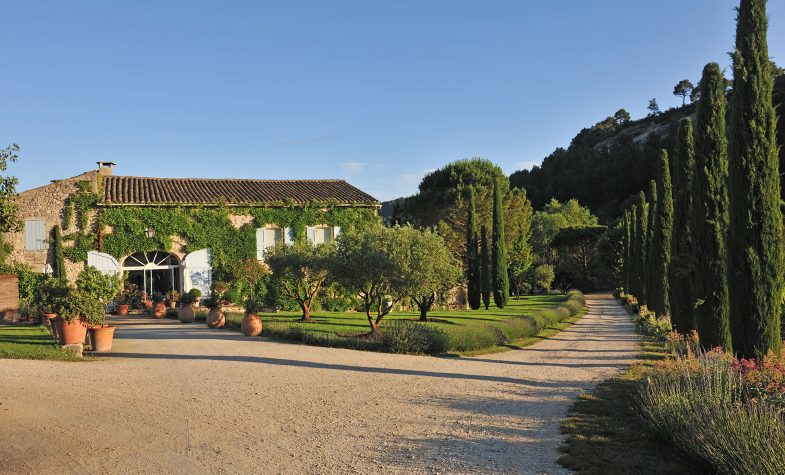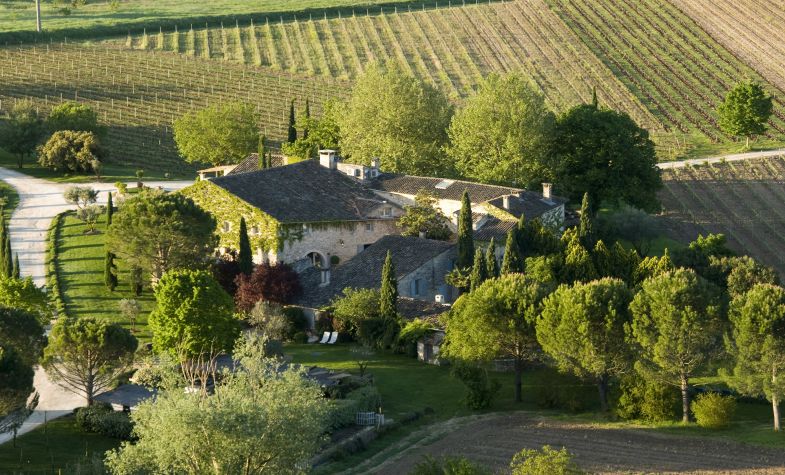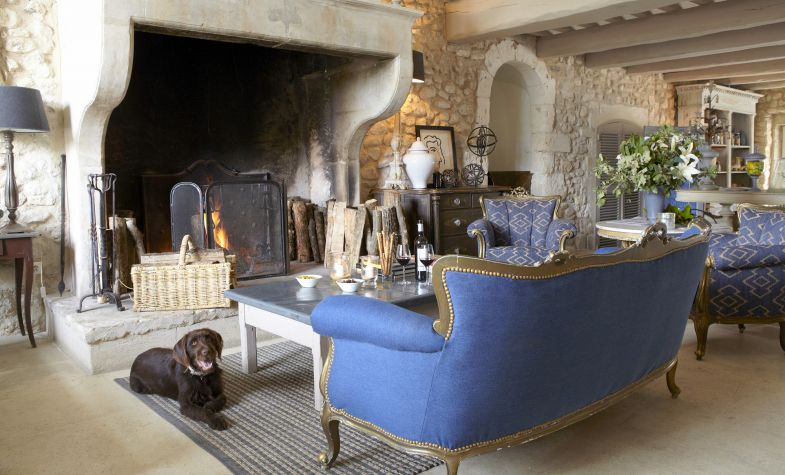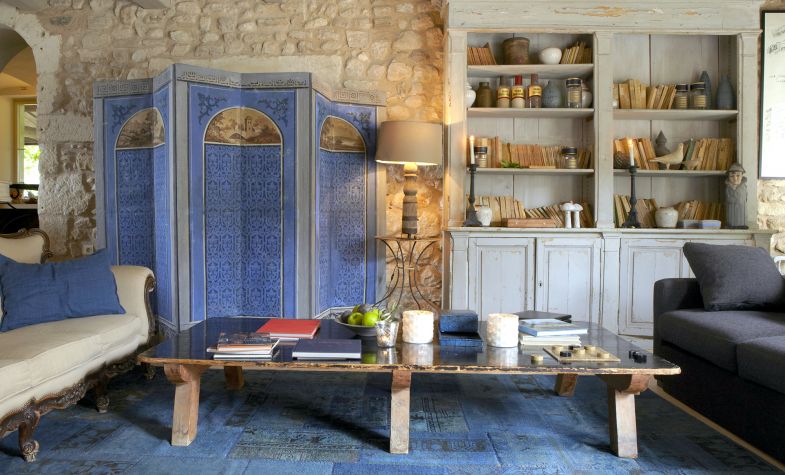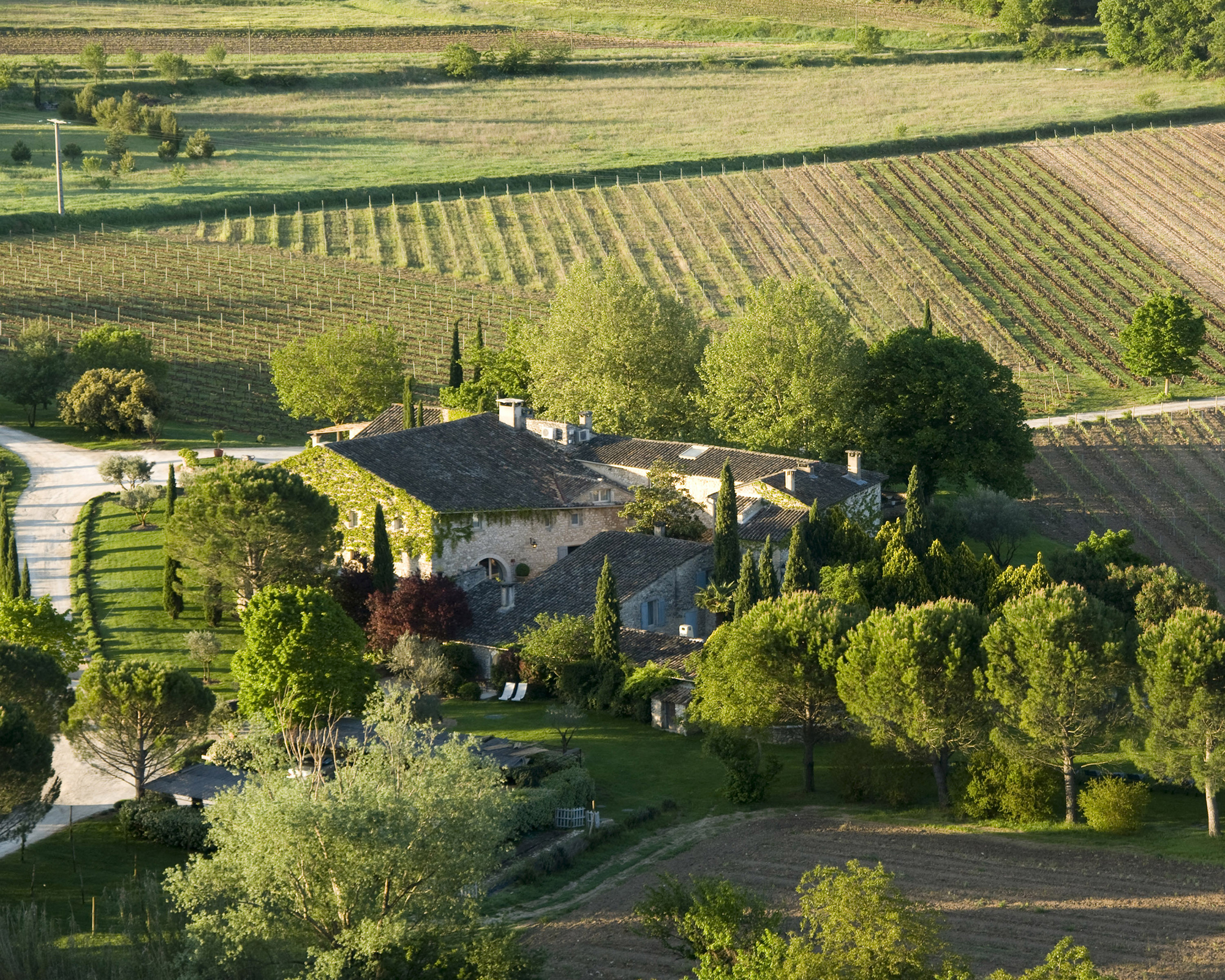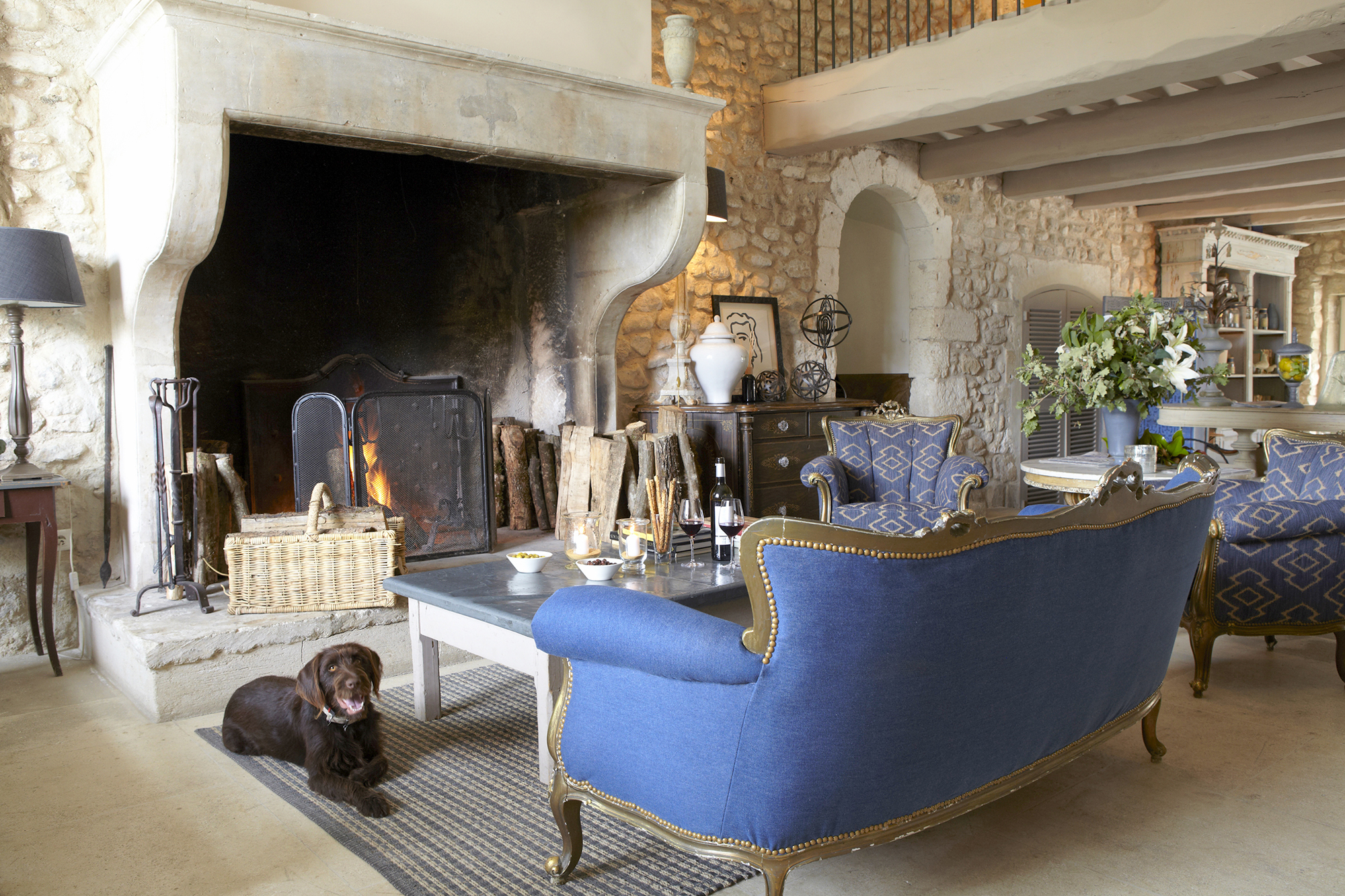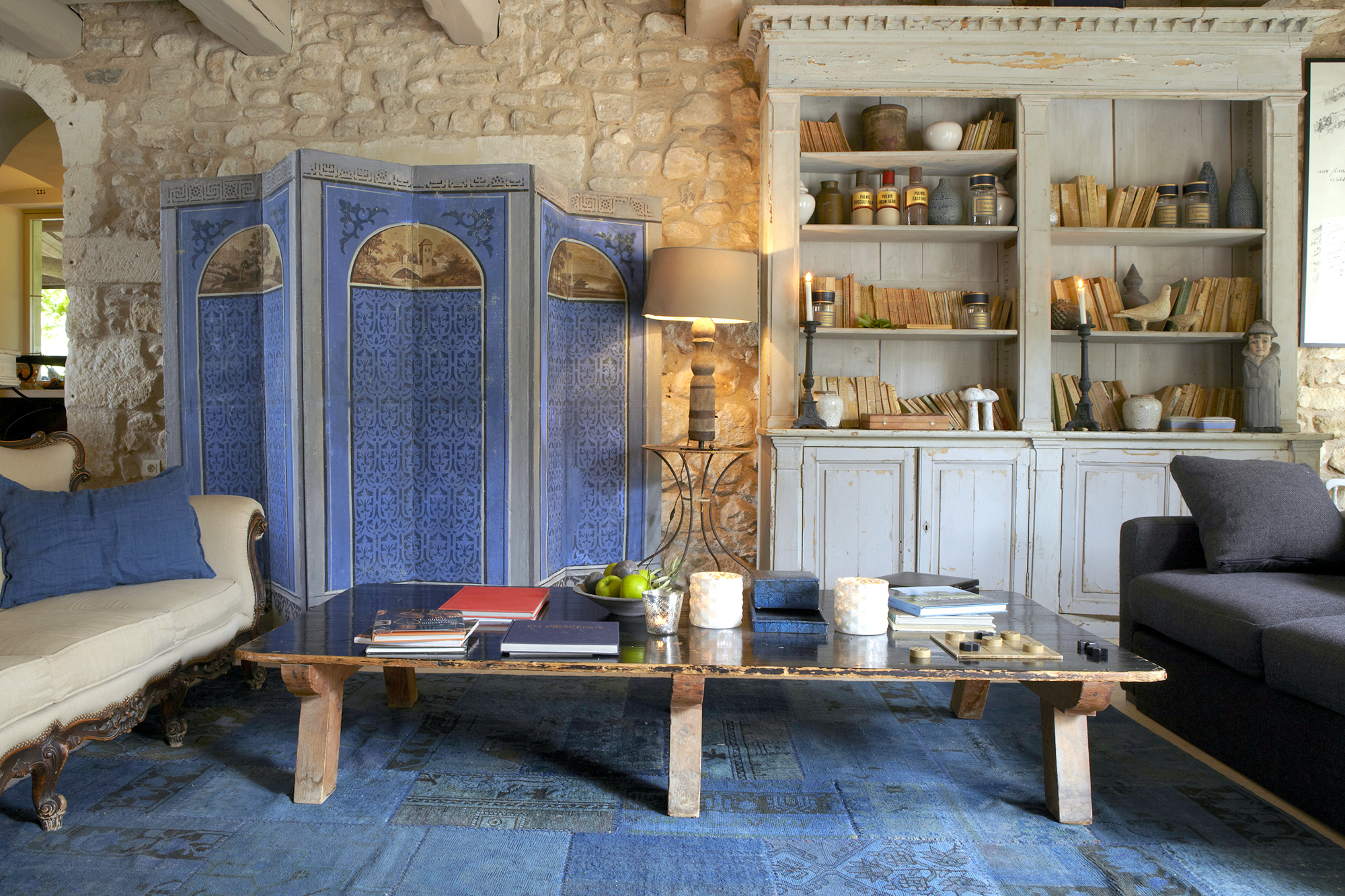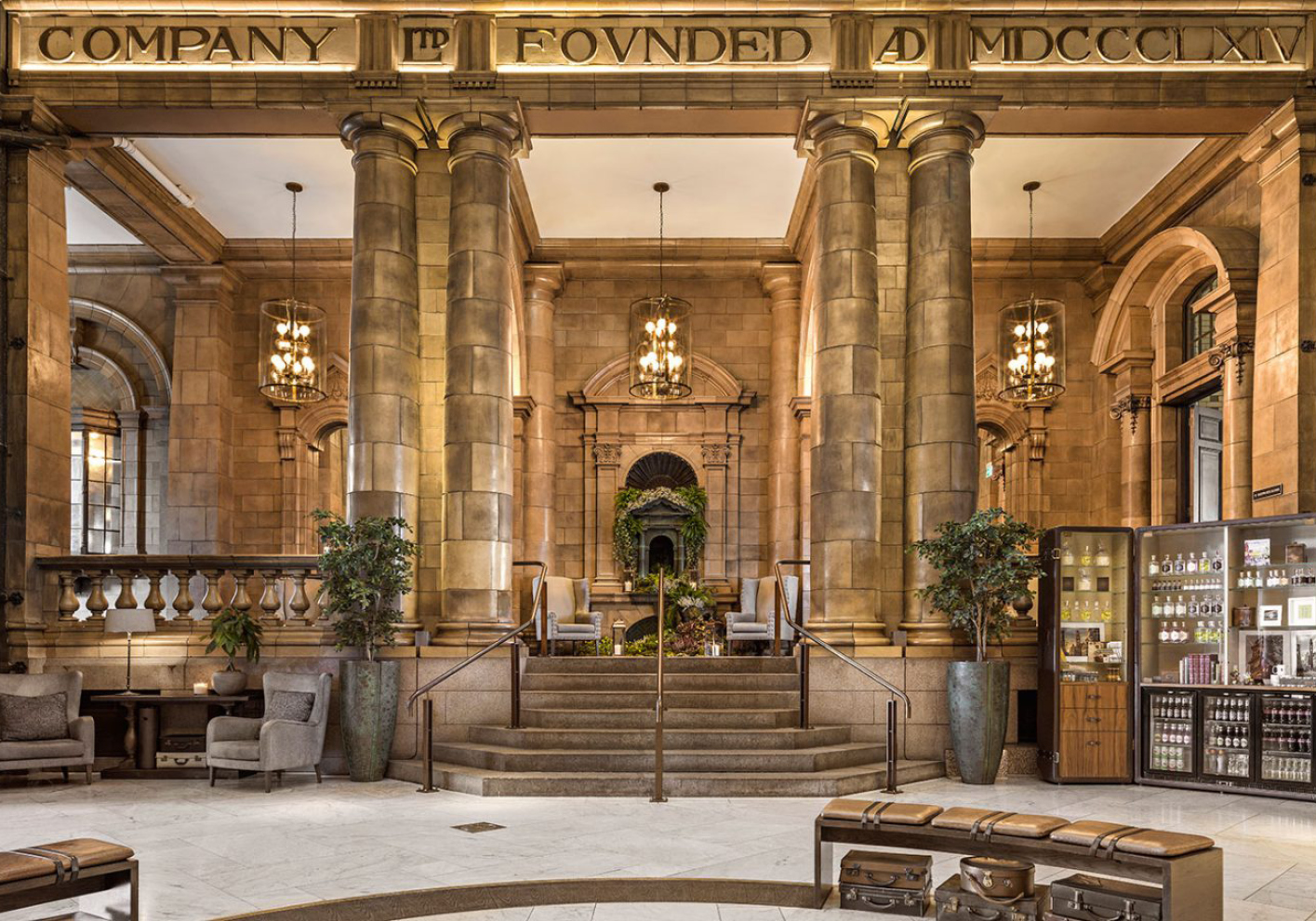WORDS
Peter Howarth
If you’ve read Peter Mayle’s 1989 account of his first year of expat life in France, A Year in Provence, you’ll know about the charms this region holds for the visitor. Mayle’s account of his move from Devon to the village of Ménerbes became a bestseller and precipitated an influx of tourists to the area in search of its beautiful landscape, sun-drenched villages and excellent local wine.
So, looking for a place to base myself in for a Provençal holiday some three decades after Mayle made the trip, I chose his village as a starting point. But as this was to be for a couple of weeks only, I wasn’t after a new home, just a home from home, and was delighted to find a hotel on the road to Ménerbes that looked like it would fit the bill.
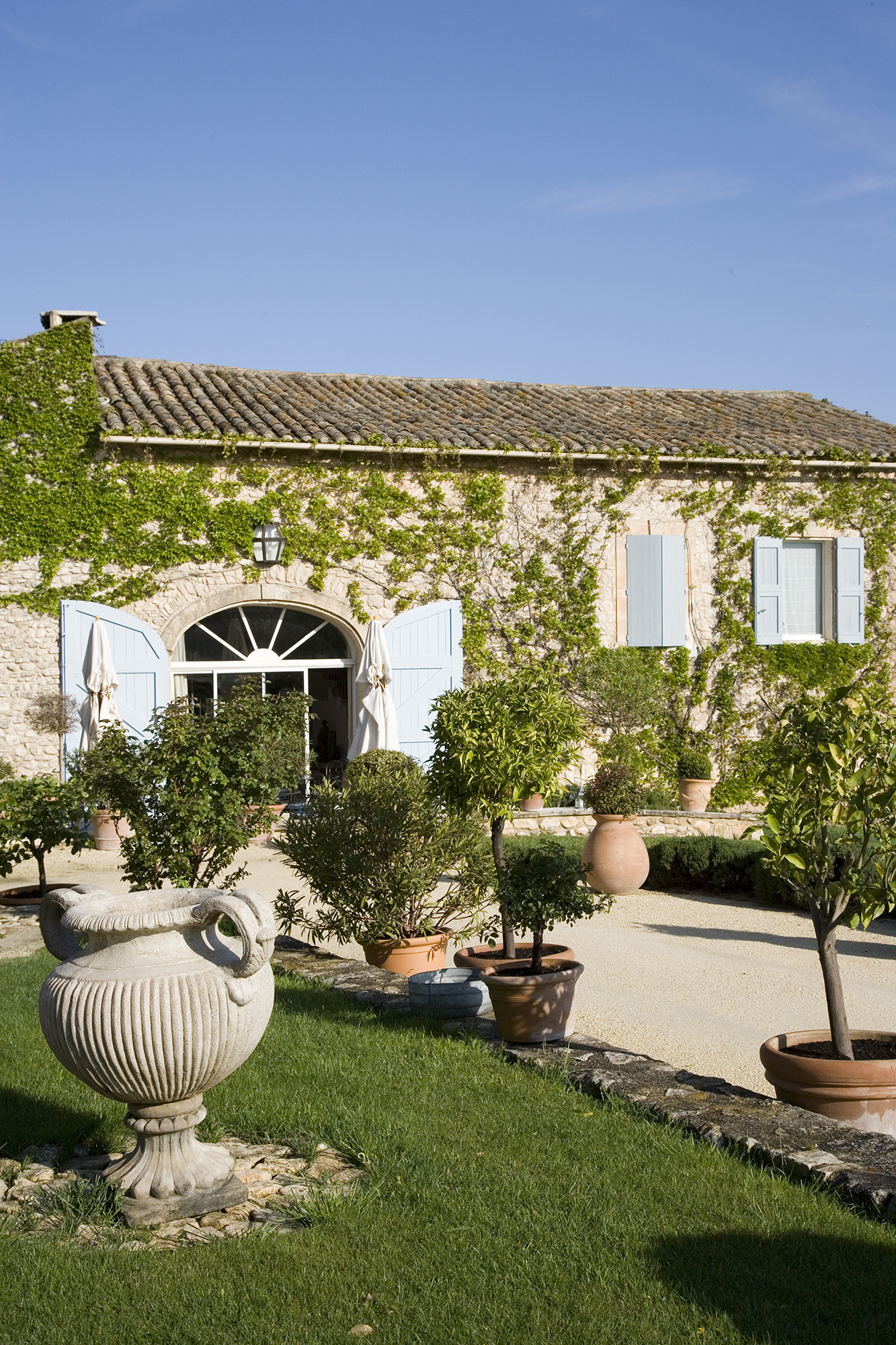
In the event, La Bastide de Marie proved to be just the thing. It seemed to have anticipated my desire for a rustic oasis of calm, steeped in the history and magic of the area. Imagine an 18th-century farm retreat decked out as if it were the home of a traveller-adventurer whose hobbies include art, winemaking and alchemy. The main lounge has a huge open fire (not lit in the summer, obviously), Picasso drawings, comfortable sofas and bookshelves hosting not only manuscripts, but also statuettes, vases and objects that look like astrological instruments. A large iron weathervane commands the space, while ceramics are displayed under glass covers that look like something out of a vintage laboratory.
There are only 14 rooms and suites in the main house, plus a wooden “gypsy” caravan (La Roulotte, which can be used for a one-night experience) and the 5-bedroom Villa Grenache in the grounds. The rooms in the house are assigned names that are colours of the region. The décor reflects the nomenclature – I stayed in Bleu de Nîmes, and it was full of restored vintage wooden furniture painted in subtle shades of blue, and had a comfortable bed draped with curtains (also blue, of course). Next door were Vanille and Rose, similarly decked out – old furniture, antique lamps and original art, with a chromatic theme. Though the décor is decidedly rural, I was relieved to find that the rooms had air con, as the temperatures were in the mid-thirties.
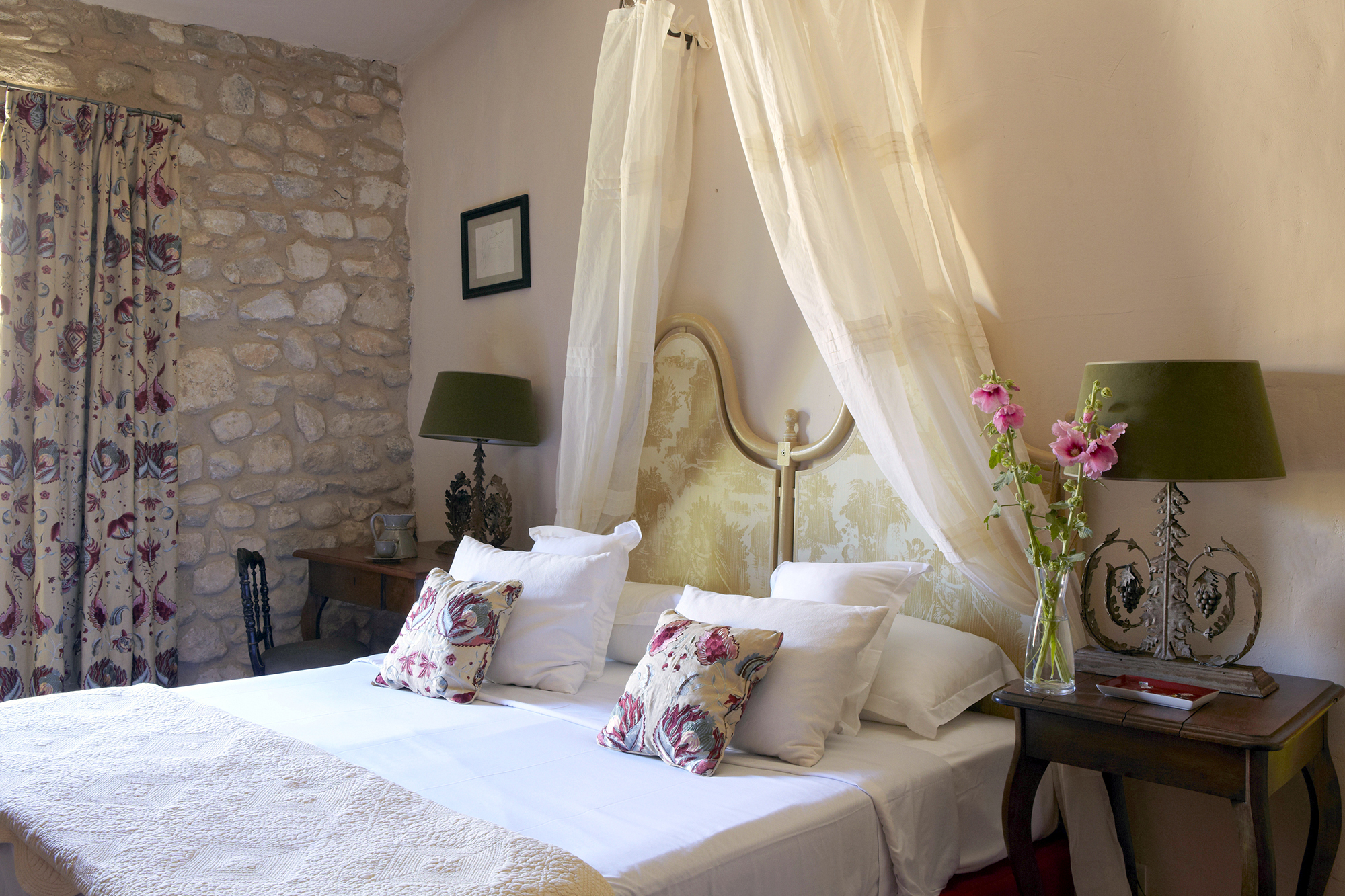
The main house is built of stone and has many communal rooms apart from the large lounge – for presenting and serving food, for dining, in winter or should the weather be unkind, and for wine-tasting. La Bastide de Marie is set within its own 57 acres of vineyards from which it produces six excellent varieties of wine (under its label: Domaine de Marie); one is a rosé, which is what you drink in the region on a summer’s evening. During the hot months, tea is served outdoors each afternoon, accompanied by home-made cake, and aperitifs start at 7pm among small box hedges, lime and lemon trees, accompanied by baskets of local crudités and some Jabugo ham. Meals from the well-equipped farmhouse-style kitchen are also consumed outside in the summer, under the clear sky, or by the light of wrought-iron lanterns overlooking the neat ranks of closely tended vines, the Cyprus trees and lavender bushes.
The menu is of simple, contemporary Provençal dishes made from fresh, locally sourced ingredients, and incorporating herbs and lavender from the estate. Chef François Martin’s specialities include smoky chilled tomato soup with olive tartare, creamy risotto with Vaucluse mushrooms and truffles, and profiteroles with lime-tree blossom and lemon, frosted with juniper and thyme. Cookery instruction classes from the kitchen team can be requested, should you fancy picking up a few tips.
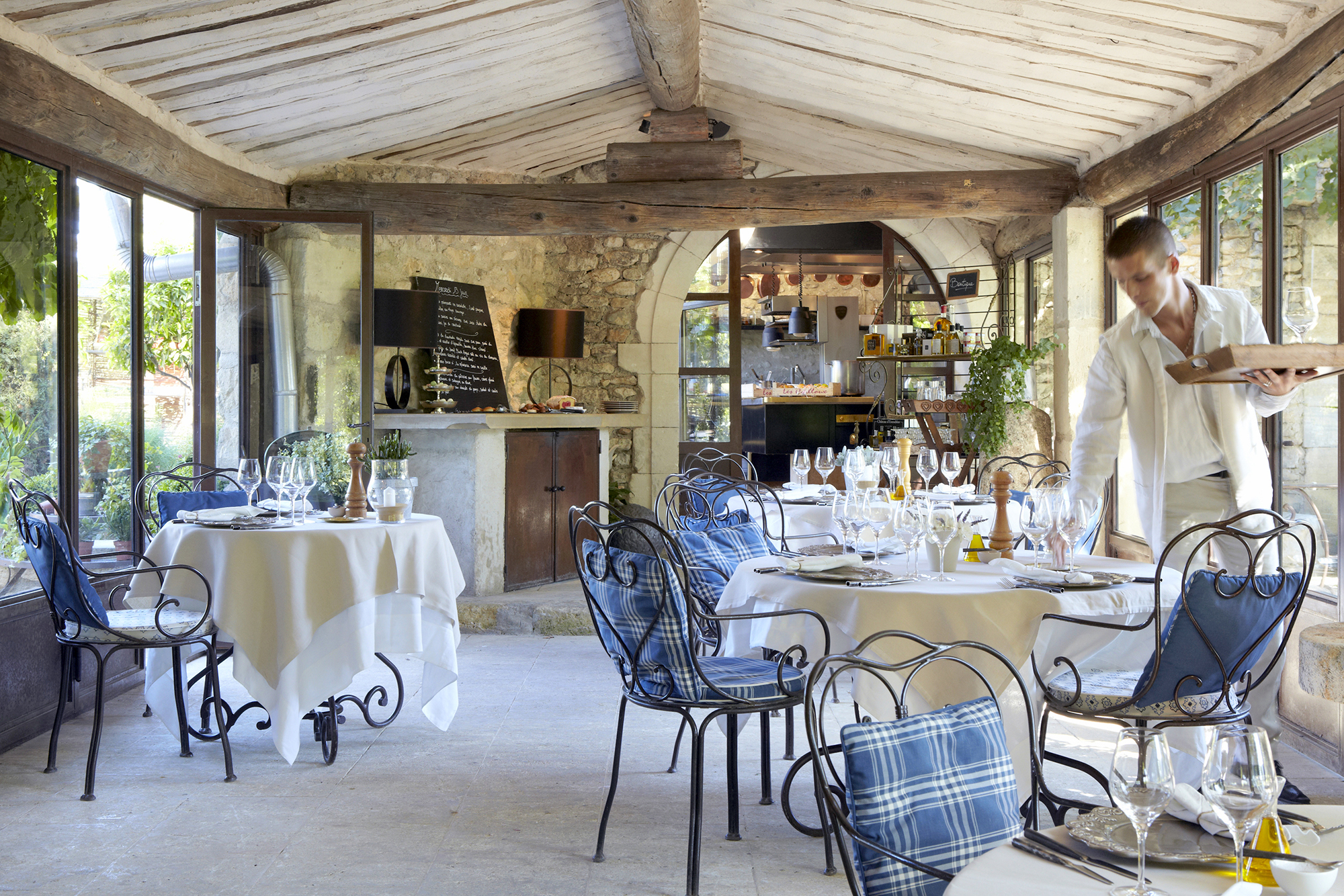
There are two outdoor pools, one heated and another not and arranged over two levels that run into one another like a waterfall. A simple, comfortable spa treatment room dispenses a variety of massages. You can borrow bicycles to roam the grounds and surrounding villages, and in this you will be in good company, as this is a favourite area for touring cyclists. There are also electric-powered bikes for hire that will help you if the hills are too much and you’re not in the mood for channelling your inner Geraint Thomas.
La Bastide de Marie is the sort of place where you could quite happily spend a week or two chilling, eating good food and drinking impressive wine. But should you wish to explore, there’s lots to do in Provence, especially if you have a car. As well as the beautiful hilltop villages of the Luberon mountains – in addition to nearby Ménerbes, you have Lacoste, dominated by the Château de Lacoste which was the castle home of the notorious Marquis de Sade in the 18th century, and Bonnieux, which was used as the location for A Good Year, the film of another of Mayle’s works. Then a little further afield is Lourmarin, the village resting place of Albert Camus, the French author and philosopher, who lived and worked here. All these villages have picturesque narrow winding streets and old Mediterranean architecture.
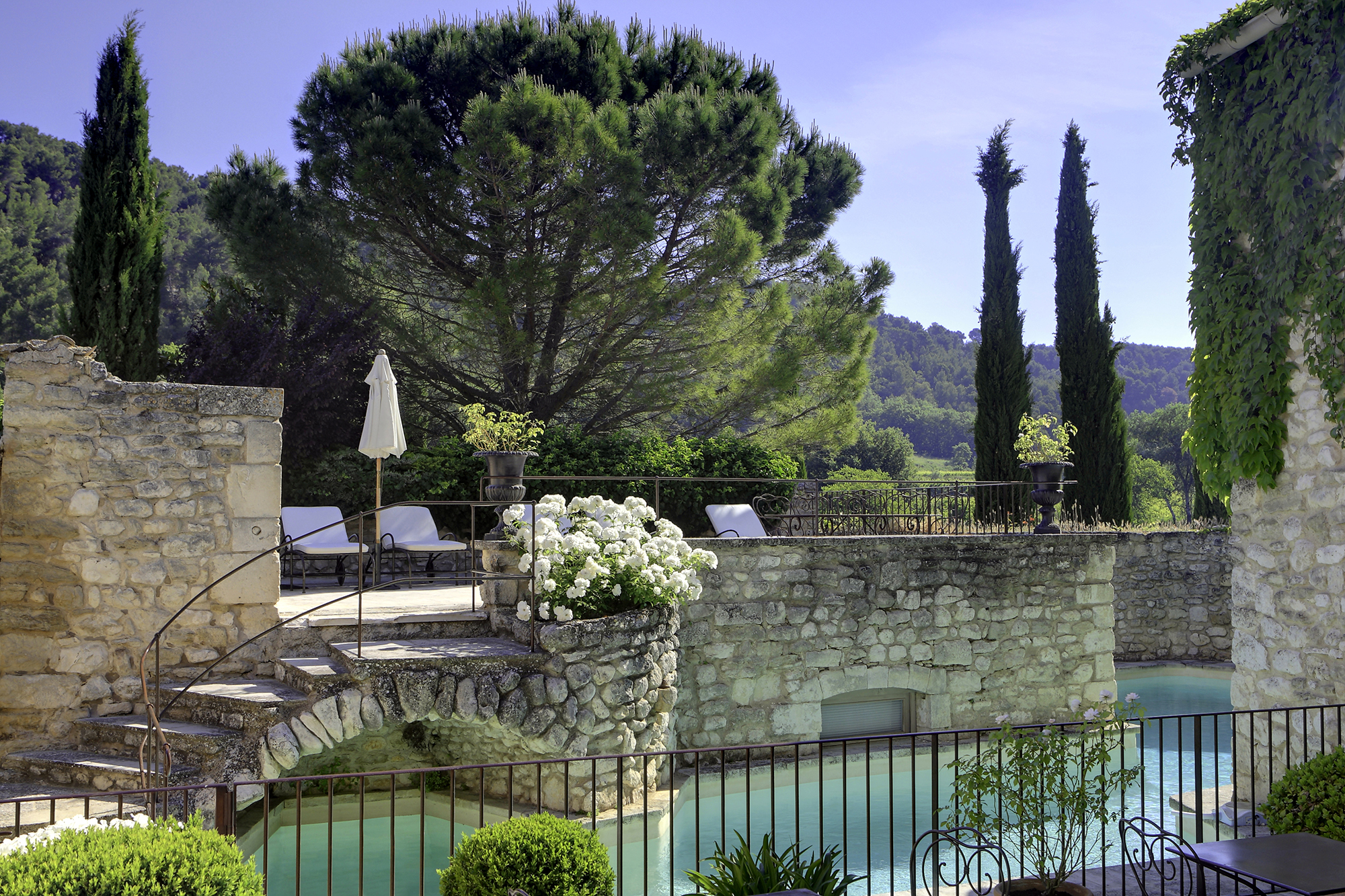
An hour-and-a-half away by car lies the Roman city of Arles, home to a number of cultural festivals, including an annual celebration of photography, which is the biggest photo festival in the world. Arles has a number of Roman buildings and monuments, including a large necropolis and an amphitheatre that is still used for events, including bullfights (some are conducted Provençal style, where the animal is uninjured). Also within an hour-and-half’s drive is Marseilles, France’s second- biggest city, a bustling port with many galleries, theatres, beaches, restaurants and bars.
So whether it’s a do-nothing gastronomic retreat you are after, or something a little more culturally challenging, the Bastide de Marie makes a great Provençal destination. And though summer is traditionally the time to visit, don’t discount the winter months. Then the roaring fire in the lounge becomes the focal point of the hotel, while the region is still beautiful and dramatic, just in a different sort of way.


